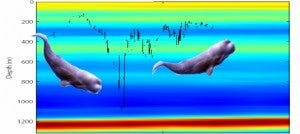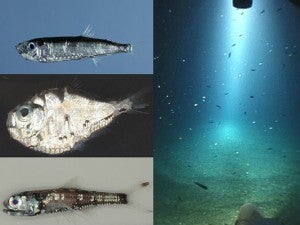“Red Herrings” in the Gulf of Mexico – Part 2: Key Ocean Ecosystems at Risk
This is the second post in a four part series discussing the ongoing – and “cascading” – effects in the Gulf, not from “oil,” but rather its toxic components and their impacts on sensitive ecosystems. Read the rest of the series.
 I remain extremely concerned about what has happened to the out-of-sight, underwater ecosystems of the Gulf of Mexico, especially at middle depths and on the bottom. These little known but ecologically vital elements of the ocean have been heavily exposed to oil-based pollution, both rising from the bottom and sinking back down from the surface, and – at least in some places – bathed in persistent underwater toxic plumes.
I remain extremely concerned about what has happened to the out-of-sight, underwater ecosystems of the Gulf of Mexico, especially at middle depths and on the bottom. These little known but ecologically vital elements of the ocean have been heavily exposed to oil-based pollution, both rising from the bottom and sinking back down from the surface, and – at least in some places – bathed in persistent underwater toxic plumes.
Marine life in the mid-waters is so rich and profuse in places that sonar waves bounce back as a “deep scattering layer” and provides key food for many familiar, surface-diving animals, including whales, dolphins, billfishes and giant tunas. Deepwater coral reefs and other bottom dwellers have been at great risk all along, and not even the initial explorations have yet been done to assess the impacts of reefs less than twenty miles from the broken well bathing in oil-based pollution.

The oil and oil-derived pollution that made it to the surface followed – and is following – one set of pathways through the Gulf ecosystem, exposing and injuring not just sea turtles and sea birds, but also near-surface marine animals and plants, large and small, and entering foodwebs through a complicated series of entry points, which we don’t yet fully understand.
Fine droplets of dispersed pollution are more likely to be adsorbed onto particulates, sinking back through the midwaters and into the abyss. The moreresistent elements, like tar balls, either float away or sink back into the abyss, and follow a different set of pathways.
 The total “dump” of highly toxic oil components, including low-molecular weight aromatic hydrocarbons (known familiarly as “BTEX” – benzene, toluene, ethyl benzene and various xylenes), could have been up to 50,000,000 gallons. These are heavy-duty pollutants in their own right, including known carcinogens and reproductive toxicants, with a fair solubility in sea water. In a surface spill, pollution mostly evaporates, and the only real concern relates to emergency response workers that are exposed while on duty. In this underwater case, scientists simply do not know – yet – exactly how the massive load of pollution is being processed in the Gulf.
The total “dump” of highly toxic oil components, including low-molecular weight aromatic hydrocarbons (known familiarly as “BTEX” – benzene, toluene, ethyl benzene and various xylenes), could have been up to 50,000,000 gallons. These are heavy-duty pollutants in their own right, including known carcinogens and reproductive toxicants, with a fair solubility in sea water. In a surface spill, pollution mostly evaporates, and the only real concern relates to emergency response workers that are exposed while on duty. In this underwater case, scientists simply do not know – yet – exactly how the massive load of pollution is being processed in the Gulf.










